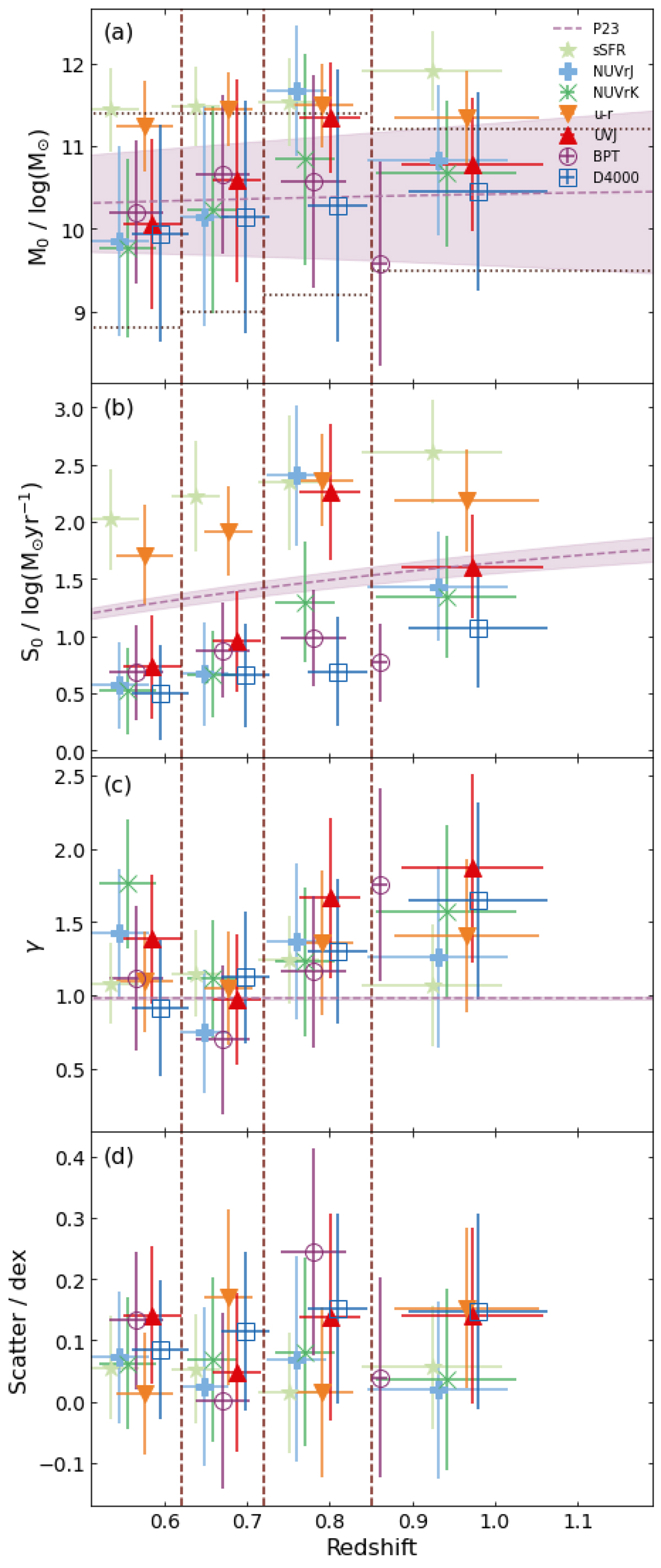Fig. 5.

Download original image
Most likely (a) turn-over mass (M0), (b) SFR that the function approaches at high-mass (S0), (c) low mass slope (γ), and (d) scatter of Eq. (9) for sSFR (light green stars), NUVrJ (light blue pluses), NVUrK (dark green crosses), u − r (orange, downward pointing triangles), UVJ (red, upward pointing triangles), BPT (empty purple circles), and D4000 (empty dark blue squares) selected galaxies. Redshifts of markers are offset for clarity. Vertical dashed lines indicate the edges of the redshift bins. Horizontal dotted lines in (a) indicate the range within which M0 must fall for the MS to be considered to have a turnover. Redshifts and their uncertainties are average redshift of the sample and sample standard deviation. Compilation results of Popesso et al. (2023, P23, lilac dashed line) are included for comparison. Popesso et al. (2023) do not provide a scatter in the MS, so this is omitted from panel d.
Current usage metrics show cumulative count of Article Views (full-text article views including HTML views, PDF and ePub downloads, according to the available data) and Abstracts Views on Vision4Press platform.
Data correspond to usage on the plateform after 2015. The current usage metrics is available 48-96 hours after online publication and is updated daily on week days.
Initial download of the metrics may take a while.


